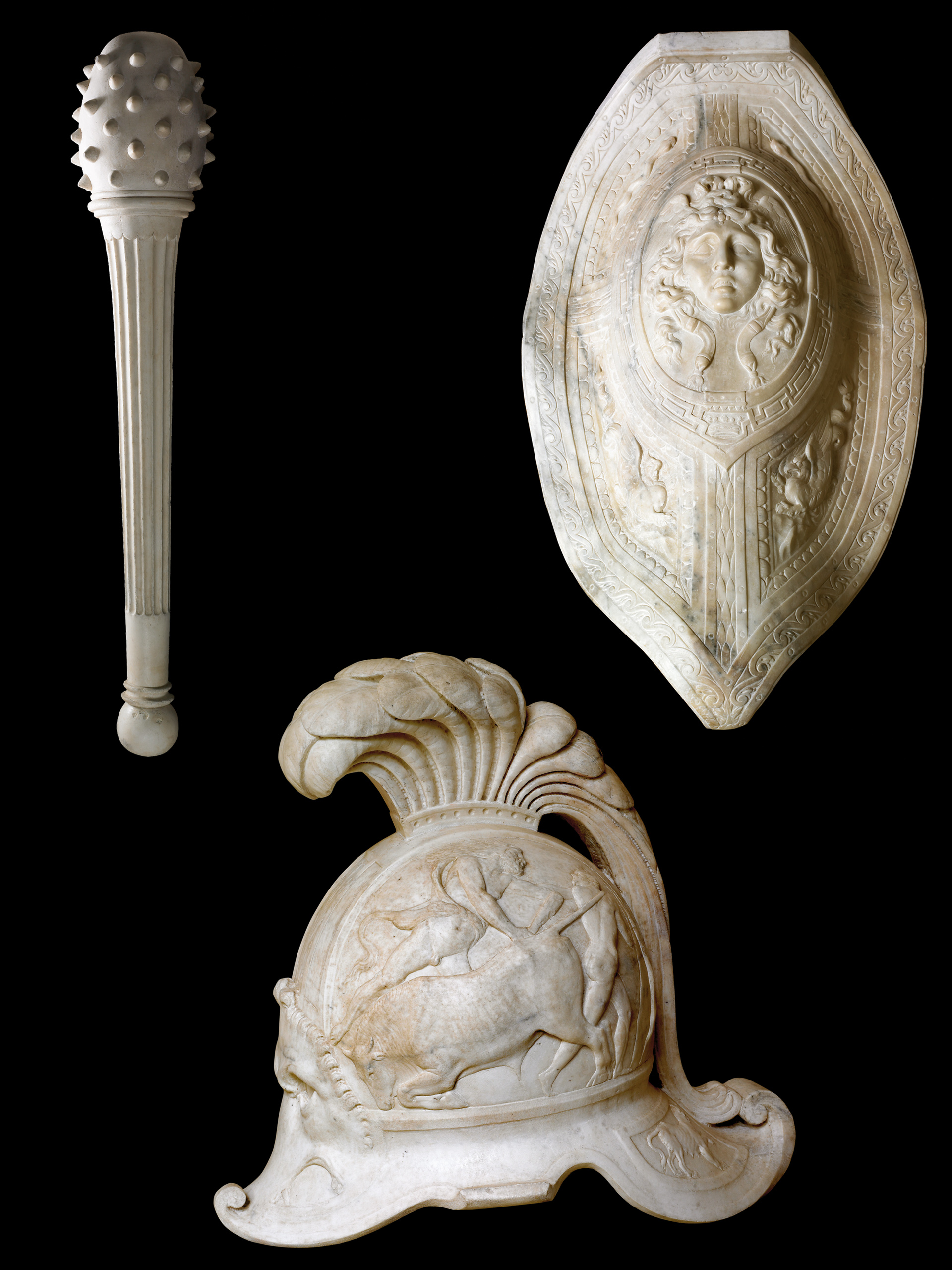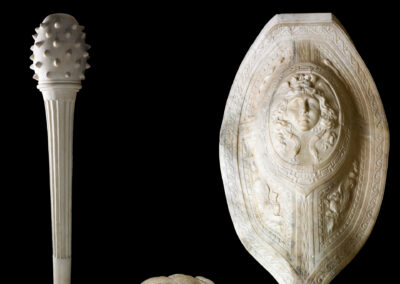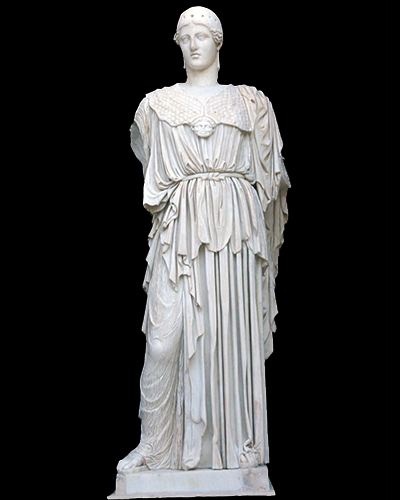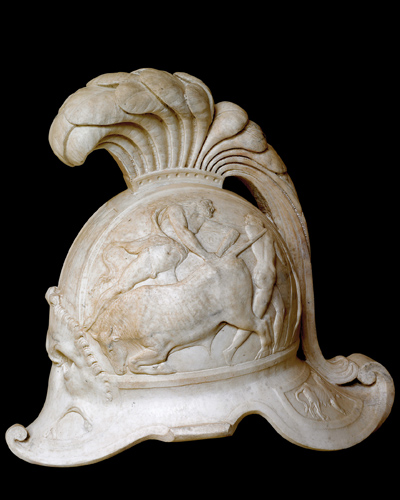Until 1957, when they were removed to give it back a more genuine appearance, the "Pallas Pacifera"From the sculptural collection formed in Naples by Per Afan Enríquez de Ribera, 1st Duke of Alcalá, and which, since the end of his days in 1571, has presided over the main courtyard of the Casa de Pilatos, had as added attributes a helmet, a shield and a mace whose authorship and date of execution are subject to debate.
Since Ernest Langlotz discovered, in the 1950s, the monogram F.D. on the right side of the plume of the helmet of the other Pallas in the main courtyard, the "Pallas", the "Pallas", the "Pallas" and the "Pallas".Belligera"While the two menaces have been attributed to the Flemish sculptor François Duquesnoy (1597-1643), the additions to the old torso still retain all their "modern" ornaments. If the stylistic argument is rather weak and, in fact, until Langlotz's discovery, they were considered to be "modern".estimable work of the Renaissance"However, the greatest drawback to accepting Duquesnoy's authorship is offered by Markus Trunk, who points out that he never travelled to Seville, the city where both Athenaeas were located at least as early as 1571. However, it could be argued in favour of this attribution that the subject matter and style would fit in with Duquesnoy's own Baroque classicism and that, during his Roman period (1618-1643), he may have coincided with Fernando Enríquez de Ribera, 3rd Duke of Alcalá, present in Italy in 1625 as extraordinary ambassador on the day of obedience to the new Pope Urban VIII and from 1629 to 1631 as Viceroy of Naples, and it may have been he who commissioned the sculptor to make the pieces and send them to Seville so that another sculptor could place them on the two Pallas.





